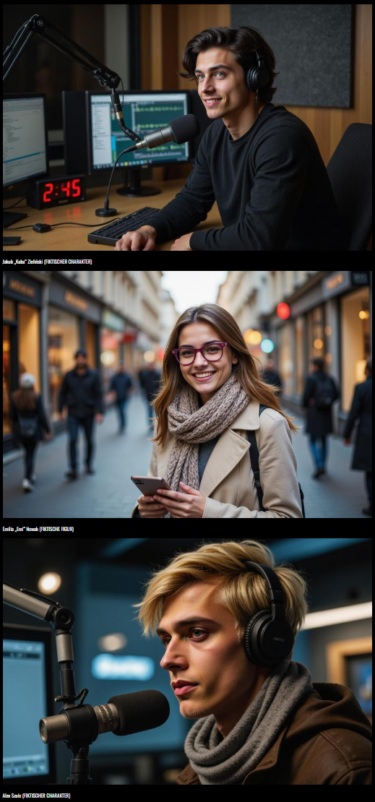Polish radio station ends AI presenter test after public backlash

Key Points
- Polish radio station OFF Radio Krakow has prematurely ended a controversial experiment with AI-generated hosts. After just one week and heavy public criticism, the station ended the three-month project. The criticism was fueled by the station's firing of journalists in August.
- According to editor-in-chief Marcin Pulit, the three Generation Z virtual anchors were designed to appeal to a younger audience. The content was created and vetted by real journalists before being set to music by the AI. It was an experiment and had nothing to do with the layoffs.
- The project was accompanied by research and was intended to spark a debate about the risks and regulatory requirements of AI. Pulit sees many unresolved issues, such as image protection, labeling of AI-generated content, and copyright.
A Polish radio station stopped using AI-generated radio hosts after just one week following strong public opposition to the three-month project.
OFF Radio Kraków, a public radio station, halted its AI presenter initiative after receiving widespread criticism. "We collected enough observations, opinions, and conclusions within a week that continuing made little sense," said editor-in-chief Marcin Pulit in a statement.
Public pushback
The station created three AI personas meant to represent Generation Z: Emilia Nowak (a 20-year-old journalism student), Jakub Zieliński (a 22-year-old acoustics engineer), and Alex Szulc (a 23-year-old psychology student).
Each virtual host ran a two-hour weekly music show, with content written by human journalists and voiced by AI. The AI project aimed to attract younger listeners with programming about culture, the arts, and social issues, including LGBTQ+ issues.

Former station journalist Mateusz Demski started an online petition against the AI presenters that gained over 23,000 signatures in just days. Demski called the project a "dangerous precedent."
Poland's Digital Affairs Minister and Deputy Prime Minister Krzysztof Gawkowski called for AI regulations on X, noting that "certain boundaries are being crossed more and more frequently."
Ratings, not AI, drove layoffs
A major catalyst for the backlash was the network's decision not to renew the contracts of journalists involved in the program in August. People assumed the station was trying to replace human journalists with AI voices. But OFF Radio Kraków says it didn't remove human hosts because of AI, but because of "near-zero" ratings.
Pulit said the intense reaction showed a widespread fear of AI replacing workers. He criticized media coverage of the project, saying it demonstrates how "post-truth mechanisms work" and how "facts become less important than emotionally appealing narratives."
Researchers from Kozminski University and Jagiellonian University oversaw the project. Pulit noted that it revealed gaps in current regulations, from image rights to labeling of AI content, and provided insights for future legislation.
AI News Without the Hype – Curated by Humans
As a THE DECODER subscriber, you get ad-free reading, our weekly AI newsletter, the exclusive "AI Radar" Frontier Report 6× per year, access to comments, and our complete archive.
Subscribe now